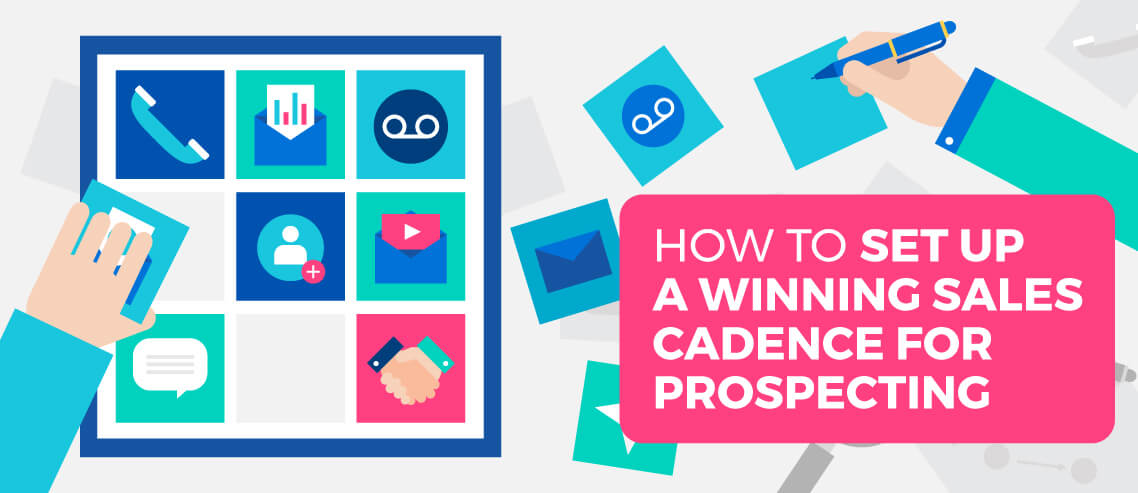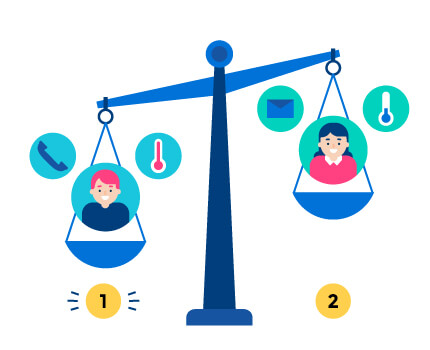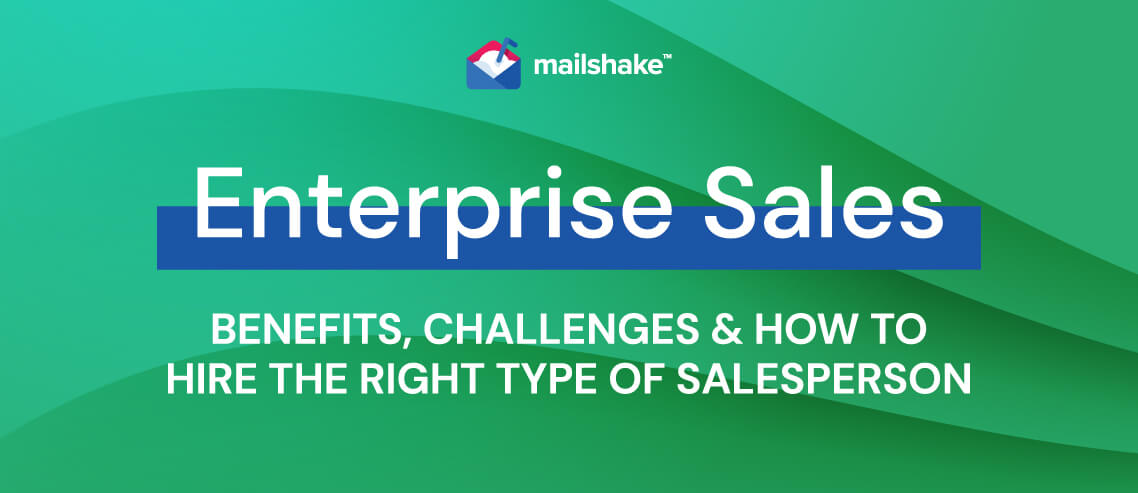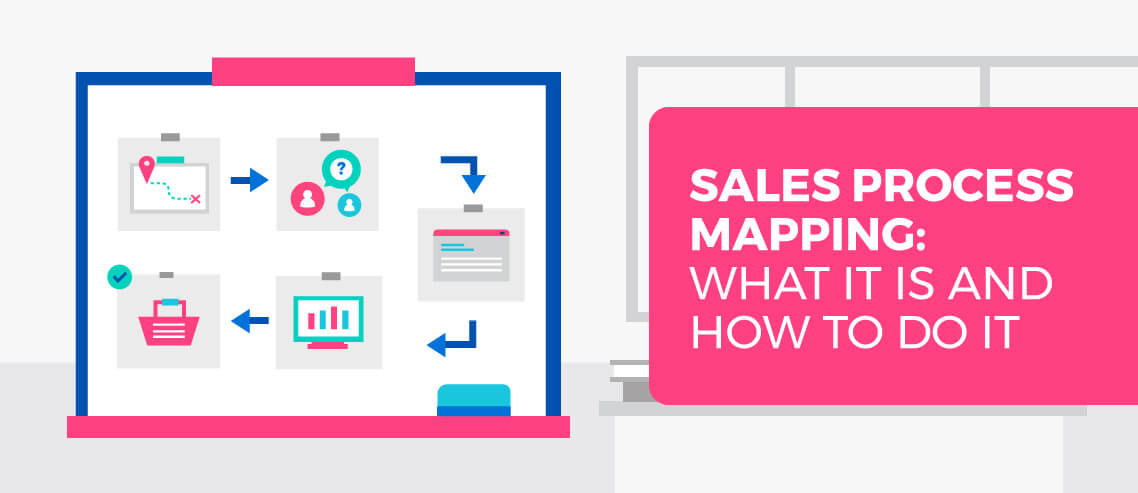How to Set Up a Winning Sales Prospecting Sequence

Contents
Laying the foundation for a successful sales prospecting sequence sounds harder than it is.
Sure, it will take research, some tweaking here and there, and a lot of testing, but that’s not wasted time – that’s time spent learning more about your ideal prospects. Those outreach attempts and initial conversations may not lead to a sale, but each one teaches you something that makes you a stronger salesperson the next time around.
If you’re ready to put in the work, let’s get into how to set your outreach strategy and build your outreach sequence.
Why You Need to Use Multiple Channels for Your Outreach
Putting all your eggs in a single basket is a high-risk strategy.
Say you do all your cold outreach via LinkedIn InMail. LinkedIn is a wholly owned subsidiary of Microsoft. What happens if Microsoft decides to change the way InMail operates, or takes it away completely? It’s unlikely, but it would mean that you’ve lost your only means of generating leads overnight.
Diversifying your outreach is a much more sensible approach. Having multiple options allows you to mitigate slumps in performance on specific channels – if one month you’re struggling to generate leads via cold calling, your cold email outreach can pick up the slack.
There are other benefits to the multi-channel sales outreach approach, too. For one thing, experimenting with multiple channels helps you maximize ROI. If you learn that a combination of cold calling and emailing delivers the best results, you can do more of it.
Furthermore, each person has a favored communications channel. By utilizing as many channels as possible, you increase your chances of resonating with your prospects.
The multichannel approach also makes you more visible. If a prospect is out of the office, you might be unable to reach them via phone – but they might still be available on email or LinkedIn.
Understanding the Goals of Your Outreach Sequence
Fewer than one in five salespeople think they’re pushy. Unfortunately, prospects don’t agree, with 50% describing salespeople as pushy.
This tells us that a lot of salespeople are in a hurry to close the deal.
Often, this is down to a fundamental misunderstanding of what you should be trying to achieve through your sales outreach.
Of course, you ultimately want to sell something to the prospect you’re speaking to. Otherwise you wouldn’t be reaching out to them in the first place. But selling shouldn’t be your immediate goal.
Instead, it should be to move your prospect to the next step in your process, whether that’s a follow-up call, an in-person meeting, or a product demo.
The Strengths & Weaknesses of Each Outreach Channel
Each outreach channel has its own unique characteristics, and none is objectively better than the others. Rather, different channels can be effective at different times, in different scenarios, and with different types of prospects.
When you’re building a multichannel sales outreach sequence, it’s vital that you understand the strengths and weaknesses of each individual channel.
Pros and Cons of an Email Outreach Sequence
Scalability
Pro: Email is easily scalable
A big part of email’s popularity as an outreach channel is its scalability. You can reach dozens, or hundreds, or even thousands of people with a single email – although you probably shouldn’t approach cold email outreach in that way, because it won’t be personalized.
Con: Everyone is doing it, making it harder to stand out
Unfortunately, you’re not the only person who’s realized that email is an effective outreach channel. By 2022, the average person is expected to receive 333 business and consumer emails a day. That’s a lot of noise to cut through.
Segmentation
Pro: Segmentation allows you effectively personalize cold emails
Personalization is essential to the success of sales outreach campaigns. In fact, emails with personalized subject lines are 26% more likely to be opened.
Segmentation holds the key to effective personalization. If you don’t segment your prospect list by interests, or job titles, or industry (or some other criteria), you simply won’t be able to send personalized communications at scale. So it’s no surprise that segmented email campaigns have been found to drive revenue increases of up to 760%.
Con: Segmentation doesn’t build you a prospect list
Of course, segmentation is only effective when you have a large enough list of prospects. If you only have a handful of names and email addresses, segmentation isn’t going to yield results.
Also, your list of prospects needs to have broad characteristics, like “SMEs” and “enterprise.” Otherwise it’ll be too labor-intensive to reach each group effectively.
Pros and Cons of Cold Calling in an Outreach Sequence
One-On-One Communication
Pro: Cold calling can be effective because you’re speaking directly to the prospect
Phone calls are generally between two people. That’s an obvious point, but it’s important, because the one-on-one nature of cold calling is a key differentiator, helping you overcome objections right there and then.
In fact, according to sellers, using the phone represents three of the top five most effective prospecting tactics:
- Making calls to existing clients: 51%
- Making calls to past clients: 37%
- Speaking at events: 32%
- Sending one-to-one customized emails: 31%
- Making phone calls to new contacts: 27%
Con: Cold calling isn’t as scalable
On the flip side, because every conversation is one-on-one, it’s hard to scale cold calling. You can find efficiencies, streamline your sales scripts, and coach your reps, but at some point the only way to make more calls is to hire more salespeople.
Pros and Cons of Linkedin Messaging in an Outreach Sequence
Response Rates
Pro: LinkedIn InMail has fantastic response rates
According to LinkedIn, when comparing InMails and emails with exactly the same content, InMails have a 300% higher hit rate for generating responses from prospects.
In other words, if you’re targeting a single prospect, you have a better chance of getting a response if you contact them via InMail than email.
Cons: It’s much less scalable than email
However, those response rates come at a cost.
InMail is all about quality over quantity, which means it’s simply no good for cold outreach at scale. In fact, it would cost you at least $830 to reach just 100 leads through InMail:
- $30 for a Sales Navigator license and 20 inclusive InMail credits
- $800 for the additional 80 credits, at $10 per credit
Unless each lead is worth a huge amount of money to you, this approach just isn’t cost-effective.
Connect Instantly
Pro: Once you identify a prospect, there’s no need to track down their email address
InMail is beautiful in its simplicity. Once you find a prospect, you can connect with them directly, or instantly send them an InMail message. It’s especially simple if you use Sales Navigator – you never need to leave the LinkedIn environment to identify and reach out to prospects.
Con: It can feel more intrusive
Perhaps because we’ve become conditioned to receive such a huge volume of emails every day, our email inbox doesn’t feel like a highly personal space.
Receiving a cold email doesn’t seem invasive, whereas it might if someone we don’t know sends us a direct message. LinkedIn is a business networking platform, but that sense of intrusion still exists.
A “baseline” outreach sequence
To be clear, you have to pay your dues. You have to make the calls, send the emails, and follow up relentlessly. It can be difficult, but that’s why you’re here. Prospecting and selling are all about the hustle and grind, and piecing together a stellar sales prospecting sequence is no different.
That being said, we all have to start somewhere. Here’s a baseline ‘cookie cutter’ sales sequence that many sales reps use some variation of:
Day 1 – Make your first call
Leave a vague voicemail with your first name and phone number requesting a call back at the prospect’s convenience if they don’t answer.
Day 2 – Send an email
Share a surprising statistic, relevant case study, article, or other content they may find useful.
Day 5 – Call again
Leave another voicemail if they don’t answer.
Day 6 – Email again
Don’t reference past attempts to reach out, just share more useful content or information.
Day 11 – Call again
Once again, leave a voicemail if they don’t answer.
Day 12 – Email again
Keep on sharing useful content and attempt to be a resource for them.
This could go on for a while depending on your tenacity. It takes an average of 6 to 8 touches to generate a viable sales lead, so the sequence above wouldn’t be a bad way to start if you just need to get your activity numbers in. But there’s also nothing inherently special or unique about it, either. It isn’t personalized to a specific industry, company size, or any other factors.
If you want to skip past ‘cookie cutter’ and take your prospecting to the next level, you need to customize your sequence.
You can and should tailor your approach to your industry and adjust your sequence based on factors like prospects’ company size, communication preferences, social media presence, and more. Don’t forget to take into account your own experience with your customers, and keep tweaking and testing. Keep good data on your results so you can test against past sequence to see what’s working and what’s not.
Here are just a few ways you can set up and customize your prospecting sequence.
Establish Company Size
What size company is it?
Small and Midsize Businesses (SMBs)
While enterprise clients typically have an established buying process, SMBs usually don’t. They are too busy servicing customers and don’t have a complex internal business structure. With SMBs, you are catering directly to the founder/CEO. They are typically low touch, meaning once you do have their attention, you have the ear of the sole decision-maker, who can seal the deal as soon as you’ve shown enough value.
One survey showed that SMBs overwhelmingly prefer being reached out to via email, although that may be more indicative of their desire not to be constantly interrupted than of how they’d actually prefer to do business. Email is a solid way to get initial information to SMBs. Sales professionals may favor it, too, since it’s far easier to send 100 emails than to make 100 cold calls. But this is precisely why you shouldn’t discount making phone calls – the fewer calls SMBs get, the more likely yours are to stand out.
In order to truly cover all the bases, try an omni-channel approach (don’t forget texting).
Here’s an example of a low-touch sequence using a combination of emails and phone calls:
Day 1 – Send your first email
Send something of value, like a relevant industry white paper or recent article you read about the industry.
Day 3 – Make your first call
If they don’t answer, leave a voicemail with your first name and phone number requesting a call back at their convenience. Note the time of the call.
Day 5 – Send another email and try following up with a text message
Don’t reference the first email. Simply share another resource, such as a case study or relevant article, or ask them a question. Texting is still a largely untapped marketing resource absolutely worth exploring, unless you only have an office number.
Day 9 – Call again
Try adjusting the time you make this call. If you made the first call in the early morning, try calling late afternoon. Once again, leave a voicemail if necessary, and follow up via email, sharing something of value.
Key Accounts and Enterprise
Larger account decision-makers are typically harder to get ahold of by phone because they have gatekeepers. They also have established and formal buying procedures they need to follow that tend to involve multiple stakeholders. They think long-term with every action, and really dive deep into a purchase before pulling the trigger. With so many key players involved, email helps to facilitate and carry these conversations so that everyone is in the loop.
When dealing with large companies, you’ll need thick skin, more touch points, and serious persistence. On top of that, your normal sequence will be spread out further. Try using a 45-day sequence instead of 30, since large companies move slowly and think more in terms of quarters than weeks or months.
When trying to contact key decision-makers like CEOs and executives, you have to keep in mind that they’re typically always on the go. Mobile is playing an extremely critical role in the B2B customer journey in particular. Google found that mobile drives (or influences) an average of more than 40% of revenue in leading B2B organizations. Since more people than ever are reading email on their smartphones or tablets, write your emails from these devices so you know exactly what they’ll see.
When planning your day, it’s best to prioritize larger accounts since they’ll get you closer to goal and will require more touches to finally close. You’ll notice the following sequence is more aggressive, with touches closer together.
Here’s an example of a high-touch sequence targeting key accounts and large businesses:
Day 1 – Send an email
Keep your email short so they don’t have to scroll. Share a surprising statistic, relevant case study, article, or other content they may find useful.
Day 2 – Send a follow-up email
Don’t reference the first email, since chances are they skimmed right over it. Instead, focus on providing value. Share another statistic, case study, or article that they might find value in. What you share could even help get them on the phone: research shows that reaching out to C-level prospects using business cases with a clear ROI could result in a whopping 75% of them taking your call. And at the enterprise level, 48% of business buyers look at two to five pieces of content before making a purchasing decision.
Day 4 – Try calling later in the day or after hours
Decision-makers are usually trying to get a grip on their hectic day early on, so catching them after hours can be a quick win. Remember to leave a voicemail if they don’t answer.
Day 5 – Send another follow-up email
Don’t reference past attempts to reach out – just share more useful content or information. Try sending a relevant video this time to switch it up.
Day 7 – Try calling again
Once again, leave a voicemail if they don’t answer. If possible, switch up the time again and try to catch them early in the morning or at lunch.
Day 8 – Send another follow-up email
Keep on sharing useful content and attempt to be a resource to them.
With a 30-45 day sequence, this touchpoint sequence could go on quite a while. Take detailed notes and use software like Mailshake to track your email opens to get a better idea of what’s working and what isn’t.
Determine Social Media Presence
Are they active on social media?
If the prospect is active on public social media sites, this should definitely be an integral part of your omni-channel touchpoint sequence. The best-performing sales reps use LinkedIn 6 hours a week for prospecting and connecting with peers. Be approachable by posting often, interacting with others, and participating in relevant discussions, and have a clear and concise bio stating the value you bring to clients.
Day 1 – Send an email
Make it as personal as possible. Do some research about the person and the company they work for. Keep the email tight and value-focused.
Day 2 – Add them on social
Usually, LinkedIn is the number-one platform for prospecting, but other social media platforms are far from off the table. Try sending a connection request with a short message to start off.
Day 3 – Try calling them
With any cold outreach, a phone call is usually the ultimate goal, so give it a shot early on. Leave a brief voicemail if you don’t reach them.
Day 4 – Engage with their social media profile
Whether it’s LinkedIn, Instagram, Twitter, or Facebook, find a tactful way to get on their radar. Retweet one of their posts, comment on something, or even consider direct messaging them.
Lead Scoring and Testing
Remember to prioritize and adjust leads based on their lead score, as well. Are they qualified already? Is the lead hot, warm, or cold? Did they recently open your email, or did you get through on a phone call? Prioritize hotter leads when planning your day, and consider reaching out multiple times a day if you get no response. Colder leads can be reached out to less frequently.
Finally, remember to always be testing to find the sweet spot for your ideal prospects. Take 100 prospects through one sequence, then another 100 through another sequence, and see which performed better. Keep testing and refining your process so you never lose your edge.





